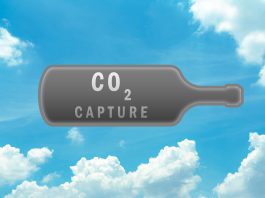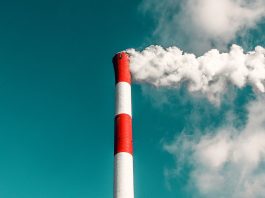Giuseppe Giammarco, Managing Director of Giammarco-Vetrocoke, explains how the company has evolved with the green energy transition to offer effective and reliable carbon capture technology.
Innovating in green solutions since 1955, Giammarco-Vetrocoke (GV) is committed to the removal and recovery of CO2 from gas mixtures. The company is a licensor of proven carbon capture technology designed to remove CO2 from a wide set of gas mixtures (e.g. syngas, biogas, flue gas, DRI recycle gas).
The Innovation Platform spoke to Giuseppe Giammarco, Managing Director of Giammarco-Vetrocoke, to find out more about the company and its products.
Can you start by telling us more about your company, its history, and your product offering?
Giammarco-Vetrocoke was established in 1955 in Porto Marghera, Venice, Italy. We are a world-renowned process licensor in CO2 capture from gas streams by utilising hot potassium carbonate (HPC) solutions. Throughout our long activity, we have developed 15 main patents extended to the main industrial countries which have been applied to over 400 industrial units.
The need for CO2 capture processes historically relates to the production of ammonia. CO2 has to be removed in the front end of ammonia production because it must not come into contact with the catalyst in the reaction step and also because it would increase the already enormous energy costs in the compression step, being an inert (the pressure reached 800 bar in the 1930s and almost 200 bar now). Furthermore, if ammonia is finally converted into urea, CO2 becomes a needed reagent for the production of urea. The latter is the world’s most used nitrogenous fertiliser, on which the global agricultural industry has been based since the last century. Thus, the importance of CO2 capture processes in the history of the demographic growth of the world population over the last 100 years is critical, given that urea is still the most manufactured by mass organic chemical in the world.
The relevance of HPC-based CO2 capture in history suggests how much they have been applied and refined over the years, resulting in a very solid knowhow in CO2 removal by the leading companies in the sector, such as Giammarco-Vetrocoke.
Why is carbon capture so important?
There is an urgent need to limit the rise in global temperatures to avoid severe environmental repercussions. The target can be achieved only by reducing the greenhouse gas (GHG) emissions by implementing effective carbon capture technologies with the ambitious aim of net-zero carbon emissions by 2050.
There are essentially two ways to reduce the amount of CO2 in the atmosphere. The first is called direct air capture (DAC) and aims to remove the excess CO2 already present in the atmosphere. The second is called carbon capture utilisation and storage (CCUS), whose purpose is to intervene directly at the source of CO2 emissions. The removed carbon dioxide can then be used as a feedstock for an industrial process or permanently stored underground. Therefore, one solution works retroactively (DAC) and one works preactively (CCUS). The latter would guarantee a more organic and natural transition towards the carbon-neutral target, since it would allow for the continuation of current industrial productions without upsetting entire sectors.
The CCUS solution is flexible as it can be implemented in any industrial production site, finding the most suitable carbon capture technology for the specific operating conditions. Although both solutions must be pursued to reach the carbon-neutral target in the next decades, for logical reasons it is necessary to intervene as soon as possible directly on the sources of CO2 emissions following a cause/effect principle. The CCUS will be mainly used in industrial sectors with the highest CO2 emissions, such as: power plants (either based on fossil fuel or on biomass), waste-to-energy plants, cement factories, glass factories, steel factories, pulp, and paper. Furthermore, carbon capture technology will be used in the production of blue ammonia and blue hydrogen and therefore will also play an important role in the energy transition from fossil fuels to renewable energies.
What technologies are currently available?
The CCUS envisages two main types of technologies for CO2 capture: amine-based processes and HPC-based processes. The processes for capturing CO2 from PCFG have only recently been of interest, and thus implemented, and are all based on amine processes (the only industrial references in the world for HPC-based processes for CO2 capture were made by Giammarco-Vetrocoke in Germany, Romania, and Argentina in the 1950s). So, carbon capture processes based on amines from PCFG are historically more referenced and do not require higher gas compressions, as in the case of those based on HPC, but they also have important disadvantages. The most common type of amine solvent industrially applied is mono-ethanolamine (MEA).
The main concerns of utilising MEA or other amine-based solvents are the high risk of corrosion, the huge degradation in presence of free oxygen and/or other impurities, the side reactions with SOx and NOx forming heat-stable salts (HSS) and the large energy requirement for the solution regeneration. All said factors contribute to an increase in the CapEx and the OpEx (the amine-based solvent requires a lot of heat to be regenerated and a lot of it is lost due to its high degradation). Furthermore, the disadvantage to be taken into greater consideration of amine-based processes is related to their toxicity to the environment: this is of critical importance if placed in the context in which the efforts of industries and economies are aimed at safeguarding planet Earth for the future to come.
HPC-based processes are environmentally friendly, can perform effectively on oxygen-rich gas streams (in CCUS sensitive sectors where the combustion generally operates with large excess of air) and require less thermal energy than those based on amines (the regeneration of the solvent is more agile), but they require more electrical energy since the stream containing CO2 must be compressed to obtain an effective capture (the driving force of the CO2 capture process is its partial pressure). The GV Process, being extensively used for effective treatment of oxygen-rich gas streams, has been profitably applied to the carbon capture from the post-combustion flue gas. The GV carbon capture technology, among its 400 industrial applications, stood out because of the high efficiency and flexibility of our engineering schemes. In fact, proposing tailored solutions based on customer needs, using the least number of resources and energy in the most sustainable way, has proved to be crucial as this sector requires working in highly variable conditions between electrical and thermal energy costs, plant layout, and customer targets.
What are your predictions for the CO2 capture market moving forward?
We believe that the markets are heading towards a green frontier as far as more industrial sectors are concerned with their environmental impact. This leads, among the various responsible factors, to higher taxes and financing to incentivise a reduction of CO2 emissions for sectors strongly affected by them, such as those of glass factories, steel factories, power plants, pulp and paper, waste-to-energy plants, and cement factories. The sectors that will be most interested in the CCUS to remain profitable with adequate taxation, are the basis of modern society. It is important to note that they provide the steel, glass and concrete we build with and a portion of our energy needs. Therefore, it is imperative to find a balance between taxes, incentives and costs for the implementation of CO2 capture technologies to reach the target of carbon neutrality set by 2050.
What do policymakers and organisations need to consider to support accelerated innovation in carbon capture?
Today, the biggest obstacle for large-scale CCUS projects is social acceptance. Therefore, it is necessary to demonstrate that the entire supply chain is safe, has an acceptable cost, and has no negative impact on the surrounding environment. This can be achieved through public funding of projects that meet these requirements, and HPC is now the ideal solution. This is supported by the fact that the countries with the highest environmental sensitivity, such as Northern Europe, have selected HPC-based processes for the CCUS as the highly preferred or even only accepted technology owing to its higher operating reliability (solution fully oxygen resistant with no need of reclaiming) and better environmental impact versus the amine-based processes.
Please note, this article will also appear in the thirteenth edition of our quarterly publication.





